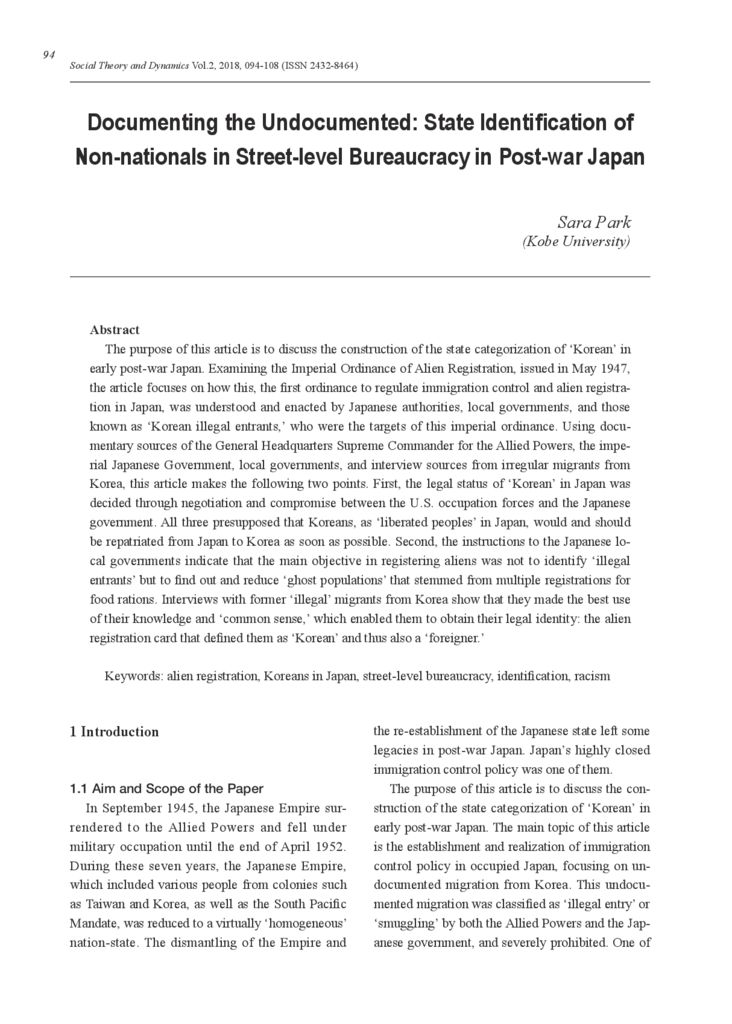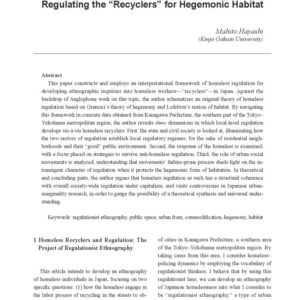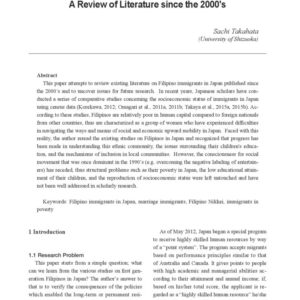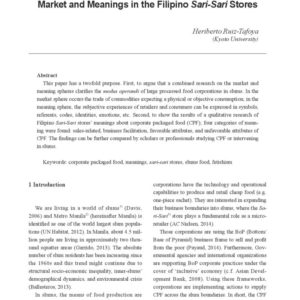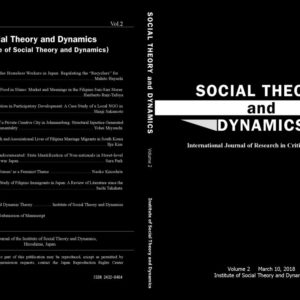Description
The purpose of this article is to discuss the construction of the state categorization of ‘Korean’ in early post-war Japan.
Examining the Imperial Ordinance of Alien Registration, issued in May 1947, the article focuses on how this, the first ordinance to regulate immigration control and alien registration in Japan, was understood and enacted by Japanese authorities, local governments, and those known as ‘Korean illegal entrants,’ who were the targets of this imperial ordinance. Using documentary sources of the General Headquarters Supreme Commander for the Allied Powers, the imperial Japanese Government, local governments, and interview sources from irregular migrants from Korea, this article makes the following two points.
First, the legal status of ‘Korean’ in Japan was decided through negotiation and compromise between the U.S. occupation forces and the Japanese government.
All three presupposed that Koreans, as ‘liberated peoples’ in Japan, would and should be repatriated from Japan to Korea as soon as possible.
Second, the instructions to the Japanese local governments indicate that the main objective in registering aliens was not to identify ‘illegal entrants’ but to find out and reduce ‘ghost populations’ that stemmed from multiple registrations for food rations.
Interviews with former ‘illegal’ migrants from Korea show that they made the best use of their knowledge and ‘common sense,’ which enabled them to obtain their legal identity: the alien registration card that defined them as ‘Korean’ and thus also a ‘foreigner.’

